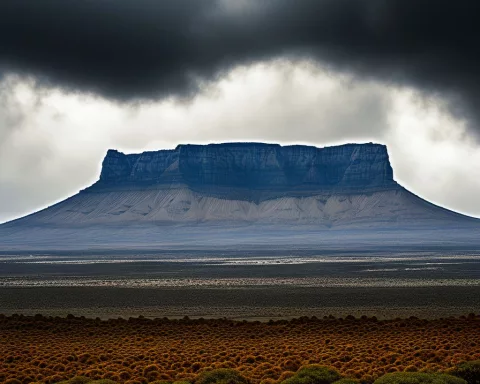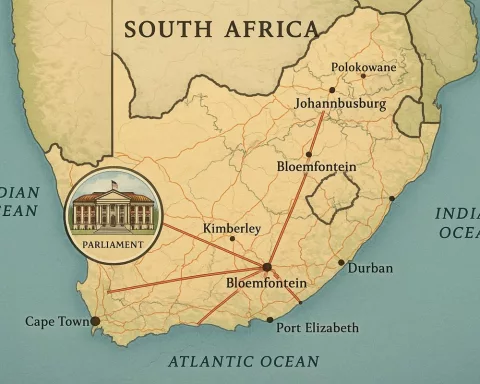The wildfires on Table Mountain were fierce and destructive, sparked by a mix of natural causes and possible human actions like arson. This iconic South African landmark, known for its unique plants and beauty, suffered greatly, raising alarms about protecting our environment. Amid the flames, a political drama unfolded, with accusations flying between officials about who was to blame. As the smoke clears, the incident shows a bigger global problem: wildfires are becoming more common due to climate change. Now, there’s a chance for everyone to reflect on how we can better care for our planet and work together to prevent such disasters in the future.
What were the causes and implications of the Table Mountain wildfires?
The Table Mountain wildfires were driven by both natural and human factors, including potential arson accusations. These fires highlight the urgent need for improved environmental management and awareness, reflecting a larger global crisis of increasing wildfire frequency due to climate change and human activity.
In the vibrant landscape of South Africa, Table Mountain stands as an emblem of natural beauty and ecological diversity. Yet, this iconic landmark recently bore witness to a devastating wildfire, igniting a complex narrative involving environmental challenges and political intrigue. This article explores the multifaceted impact of the fire and the subsequent debate it sparked among conservationists, government officials, and the public.
A Natural Haven in Flames
Table Mountain is more than just a picturesque backdrop for Cape Town; it is a vital component of the Cape Floristic Region, a UNESCO World Heritage site renowned for its unique biodiversity. Home to a vast array of plant species found nowhere else, this area is a treasure trove of ecological wonders. However, the recent wildfires threatened this delicate ecosystem, igniting a fierce discussion about the underlying causes and long-term consequences.
The fires not only ravaged the landscape, but also highlighted the precarious balance between human activity and environmental preservation. As flames consumed vast stretches of flora, conservationists and local residents voiced their alarm over the potential loss of this irreplaceable biodiversity hotspot. The destruction rekindled dialogues about the need for more robust resource management and heightened awareness of environmental stewardship.
Allegations and Accusations: The Political Dimension
Amidst the chaos, Alderman JP Smith, Cape Town’s Mayoral Committee Member for Safety and Security, emerged as a pivotal figure. Through social media, Smith suggested that the fires were not simply a natural phenomenon, but rather an act of arson. He pointed fingers at a rival political party, accusing them of orchestrating the blaze as a form of sabotage. His allegations also touched upon previous criticisms that the group leveled against the city’s Fire & Rescue Service, which had been debunked.
The timing and location of the fire fueled suspicions. According to Smith, the blaze erupted in the early hours, strategically located to maximize damage and hinder containment efforts. This narrative of deliberate arson added a layer of complexity to the incident, intertwining environmental disaster with political rivalry. The ensuing debate underscores the intricate relationship between governance, resource management, and environmental policy.
The Broader Implications: A Global Perspective
The crisis on Table Mountain is not an isolated incident; it reflects a larger global challenge. Across the world, wildfires are becoming more frequent and severe, driven by a combination of climate change and human interference. The Table Mountain blaze serves as a microcosm of this broader environmental crisis, where natural beauty and ecological stability are increasingly at risk due to human actions.
Historically, fire plays a dual role in ecosystems, acting as both a destructor and a regenerator. In the Fynbos biome, fires are essential for the germination of certain plant species. However, the intensity and frequency of recent fires exceed natural cycles, threatening to disrupt the ecological balance. This situation necessitates a reevaluation of our approach to environmental conservation and climate adaptation strategies.
Reflection, Resilience, and Renewal
In response to the disaster, the City of Cape Town and South African National Parks (SANParks) mobilized rapidly, showcasing the importance of coordinated disaster management efforts. The collaboration between government entities and conservation organizations highlights the need for a unified approach in tackling environmental challenges. However, questions about resource allocation and political commitment remain critical in preventing future catastrophes.
As the flames die down and recovery begins, the Table Mountain wildfires offer an opportunity for reflection on human impact and environmental responsibility. The scars left by the fire are a stark reminder of the ongoing struggle to balance development with ecological preservation. This incident calls for renewed commitment to sustainable practices and proactive environmental stewardship.
Amid the devastation, stories of heroism and community spirit emerged. Firefighters and volunteers risked their lives to protect the mountain and surrounding areas, exemplifying human resilience in the face of adversity. Their bravery underscores the potential for collective action and solidarity in addressing environmental crises.
As the region embarks on a journey of recovery and renewal, the Table Mountain fires challenge us to reassess our relationship with nature. They urge a return to sustainable practices that honor both the intrinsic value of the natural world and the ingenuity of human endeavors. In the aftermath of the flames, there lies an opportunity to forge a path towards a future where nature and humanity coexist harmoniously.
FAQ: The Fiery Ordeal of Table Mountain
What caused the wildfires on Table Mountain?
The wildfires on Table Mountain were fueled by a combination of natural causes and potential human actions, including accusations of arson. These events emphasize the urgent need for better environmental management and increased awareness of the impact of climate change and human activity on our ecosystems.
What are the implications of the Table Mountain wildfires?
The wildfires have raised significant concerns about the future of biodiversity in the Cape Floristic Region, which is a UNESCO World Heritage site. The destruction of unique flora has sparked discussions on the necessity for improved resource management and environmental stewardship, reflecting a larger global crisis of increasing wildfire frequency due to climate change.
How did political factors play a role in the wildfires?
Amid the wildfire crisis, political tensions surfaced, particularly with Alderman JP Smith publicly suggesting that the fires might have been acts of arson, potentially linked to a rival political party. This political dimension complicates the narrative by intertwining environmental disaster with accusations of sabotage and governance issues.
What is the broader context of wildfires globally?
The situation at Table Mountain is indicative of a wider pattern of increasing wildfire occurrences worldwide, driven by climate change and human interference. These events stress the necessity for a reevaluation of environmental conservation approaches and climate adaptation strategies to address this growing concern.
How is the City of Cape Town responding to the crisis?
In response to the wildfires, the City of Cape Town and South African National Parks (SANParks) engaged in coordinated disaster management efforts. This collaboration highlights the importance of unified approaches in tackling environmental challenges, although it raises questions about resource allocation and political commitment to prevent such disasters in the future.
What can individuals do to help prevent future wildfires?
The aftermath of the Table Mountain wildfires serves as a call to action for individuals to reflect on their relationship with nature and engage in sustainable practices. People can incorporate eco-friendly habits into their daily lives and support conservation efforts to help protect biodiversity and mitigate the impacts of climate change.












